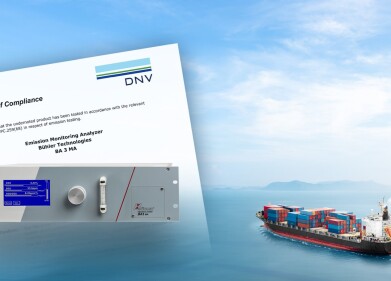Measurement and testing
Determination of Sulfur in Diesel Fuel
Jun 20 2012
Introduction
In order to ensure adherence with the statutory limit values (German ordinance relating to the sulfur content of certain liquid fuels - 3. BImSchV), there must be stringent controls of diesel used as fuel. The upper limit value stipulated of 50 mg/kg for low sulfur diesel and 10 mg/kg for sulfur-free diesel must not be exceeded, as the sulfur can lead to damage through deposition on filler nozzles and catalyst. Furthermore, the SO2 released on combustion causes a considerable burden on the environment.
Sample preparation and analysis
An analyzer of the multi EA® Series with multi matrix sampler was used for the analysis in the vertical operation mode. For each sample a volume of 20 µl was directly injected into the evaporation zone of the combustion tube with the aid of the autosampler. The biphasic combustion process and the use of a surplus of oxygen ensure the complete oxidation of the most varied sample. Following the combustion, the sulfur content of the samples is determined using a highly sensitive UV fluorescence detector.
Method parameters
The method TS_verti_liquid of the standard method library was used for analyzing. Prior to the actual determination of the sulfur content, the system is calibrated using standard solutions (dibenzothiophene in iso octane) in the range of 0 - 25 mg/kg.
Results
|
Sample |
cS [mg/kg] |
SD [mg/kg] |
RSD [%] |
|
DF_1 |
5.11 |
0.13 |
2.5 |
|
DF_2 |
21.0 |
0.57 |
2.7 |
|
Standard_5 |
5.18 |
0.05 |
1.0 |
|
Standard_20 |
20.2 |
0.18 |
0.9 |
Summary
The analyzer of the multi EA® Series are outstandingly well suited for the measurement of low sulfur content in diesel fuel and related materials, such as kerosene, organic solvents, etc.. Sample volumes are typically in the range 10-20 µl.
During parallel operation of a chemoluminescence detector the nitrogen content can be determined simultaneously. Moreover, the described analysis system can be upgraded with accessory modules for use on other applications, such as determination of the elements chlorine and carbon.
Digital Edition
PIN 26.1 Feb/Mar 2025
March 2025
Analytical Instrumentation - Elemental Analysis for Quality and Process Control at Refineries, for Lubricants and Wear Metals in Engine Oils - Synthetic Lubricants: New Developments - Scaling...
View all digital editions
Events
Apr 08 2025 Birmingham, UK
Apr 08 2025 Kielce, Poland
Apr 08 2025 Ravenna, Italy
Apr 08 2025 Southampton, UK
Apr 08 2025 London, UK



















